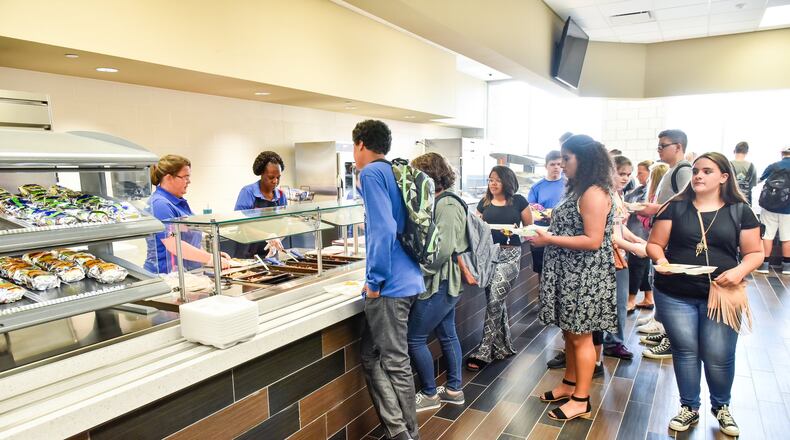Dayton, Trotwood, Northridge and some other districts have high-enough poverty rates that all students are eligible for free breakfast and lunch. In other districts, only students from low-income families qualify for free lunch. A family of four would have to make less than $32,630, or a single parent with one child would have to make less than $21,400, to qualify.
The School Nutrition Association found that three-fourths of school districts reported unpaid student lunch debt at the end of the 2016-17 school year. According to New Lebanon Schools superintendent Greg Williams, about 10% of students have a negative balance on their lunch account.
“In recent years, a few New Lebanon community members and groups have volunteered funds to pay off student lunch accounts,” Williams said. “Frequently, a staff member will volunteer funds for a student’s lunch, but this is informal and from staff members’ generosity.”
Most schools have a system that gives students a basic, alternate lunch if they are unable to pay, and some allow students to charge their accounts.
Wright State research corporation illegally paid consultant, auditor finds
In Kettering City Schools, elementary students with no money in their lunch accounts are allowed to charge a lunch three times. If their fees are still not paid, students and parents are notified to give them another opportunity to pay. But on the fourth occasion and for the next week, they are given a lunch of a cheese or peanut butter sandwich and milk.
According to district policy, if an elementary student goes beyond an eighth charged lunch, they are sent to the main office. In middle school and high school, the same steps occur, but with fewer charged lunches allowed.
West Carrollton and Centerville City Schools have similar lunch-charging policies and will discreetly inform students of low or negative account balances.
“We would like parents to understand that this is not a policy that we take lightly, nor is it something that we enjoy enforcing,” said Olivia Stone, Centerville’s student nutrition service supervisor. “We send out payment reminder slips daily, negative meal account balances weekly. We also have an online system that parents are able to access to check their student’s account balances as well as set up low balance alerts.”
Some schools have been criticized for what is called “lunch shaming,” when a student gets to the register with a regular lunch, but school staff take it away and replace it with the basic lunch for students whose families haven’t paid.
Last year, State Sen. Kenny Yuko (D-Richmond Heights) introduced a bill that would require all schools to work with parents to help them pay off debts and to end lunch shaming. The bill did not pass.
“The worst part of the situation is for the student who is sometimes embarrassed by the situation,” New Lebanon’s Williams said. “Our lunch staff is similarly affected when they must direct students to the office for a parent call or an alternative food item for lunch when they would rather just give students the lunch. Students do, however, receive food at lunch even if they cannot pay.”
Music star Jewel partners with Dayton-area school group’s new program
Williams said the use of technology to pay school meal fees has greatly alleviated the problem. Many area schools give parents the option to pay online, including Beavercreek, Kettering, Vandalia-Butler and Centerville.
Although many districts will feed students no matter the circumstances, some students in districts like Greeneview Local Schools will not be permitted to charge any food or drink “once the $25 limit is reached,” according to their website. Attempts to reach Greeneview leaders for comment were not successful.
Williams says that though there is a stigma around the free school lunch program (the National School Lunch Act was first effective in 1946), it can help many families who struggle with a negative account balance.
“Families (of older students) often do not apply for assistance because of a sense that others will know that they are receiving free or reduced-price lunch. The free and reduced lunch program is available to help families whose finances aren’t enough to provide for lunch from home or lunch at school.”
Busing issues, building repairs plague school districts after tornadoes

